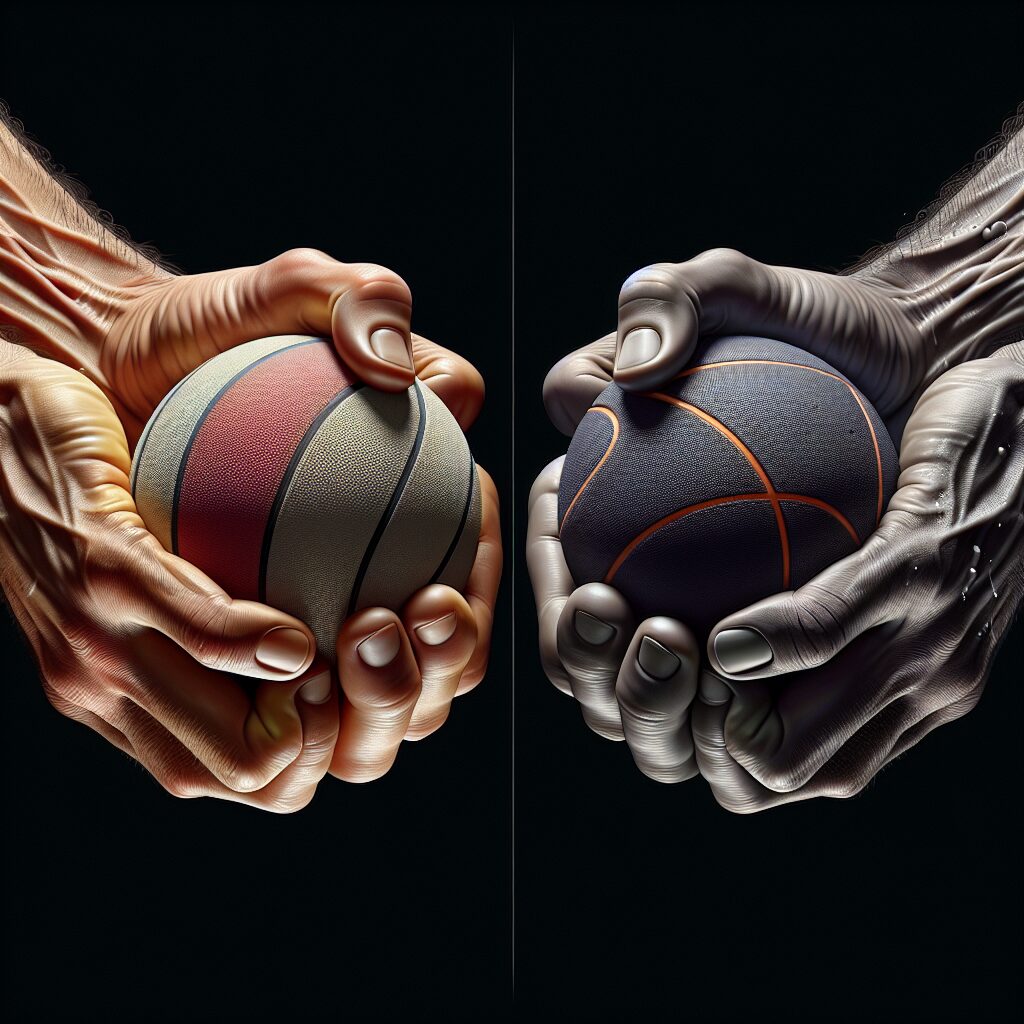Measuring the force of ball impact in sports is a crucial aspect of understanding the dynamics and performance of athletes. This practice involves calculating the force exerted by a ball when it collides with a surface or object, such as a player’s body or a sports equipment. To accurately measure this force, scientists and researchers utilize specialized instruments like force plates, accelerometers, and high-speed cameras. By analyzing these impacts, experts can gain insights into the power, velocity, and overall biomechanics of sports movements, leading to improvements in athlete training, injury prevention, and equipment design.
In specific sports like soccer or tennis, the force of ball impacts can provide valuable information about an athlete’s performance and technical skills. For instance, measuring the force of a soccer player’s ball kick can indicate their power, precision, and shooting technique. Similarly, in tennis, analyzing the force of the ball’s impact against the racket can reveal an athlete’s stroke quality and efficiency. These measurements not only help coaches and trainers tailor their instructions to improve players’ performance but also enable athletes to identify and rectify any flaws in their technique or equipment.
Moving forward, this article will delve into the key takeaways of measuring the force of ball impact in sports. We will explore various methodologies and tools used in this process and discuss their implications in understanding athlete performance and injury mechanics. Additionally, we will uncover how advancements in technology have revolutionized the field, allowing for more accurate and insightful measurements. Stay tuned to gain a comprehensive understanding of the importance of measuring ball impact force in the world of sports.
Key Takeaways
1. Ball impact force in sports can have a significant impact on performance and the risk of injury.
2. Researchers have developed various methods to measure and analyze ball impact force, including sensors, cameras, and specialized equipment.
3. Understanding the magnitude and distribution of ball impact force can help optimize equipment design, enhance athlete training programs, and improve injury prevention strategies.
4. Biomechanical studies have provided valuable insights into how different factors such as swing mechanics, ball speed, and contact angle influence ball impact force.
5. Advances in technology continue to provide opportunities for further research and innovation in accurately measuring and analyzing ball impact force, offering potential benefits across a range of sports.
How can the force of ball impact in sports be accurately measured?
Importance of Measuring Force of Ball Impact
Measuring the force of ball impact in sports is crucial for a variety of reasons. It helps athletes and coaches understand the power behind their shots or throws, aids in injury prevention, and allows for the development of more effective training techniques.
Methods of Measuring Force
There are several techniques and tools utilized to measure the force of ball impact in sports:
1. Ball-Embedded Sensors
Ball-embedded sensors are devices placed within the ball itself to capture data on the force of impact. These sensors can provide real-time feedback, allowing athletes to make immediate adjustments to their technique.
2. Instrumented Surfaces
Instrumented surfaces are specially designed platforms or fields that contain pressure-sensitive sensors. When a ball impacts the surface, these sensors record and analyze the force exerted. This method is often used in sports like golf or tennis.
3. High-Speed Cameras
High-speed cameras can capture the trajectory and deformation of a ball upon impact. By analyzing the footage, scientists and researchers can calculate the force exerted by measuring the change in velocity or acceleration.
Challenges in Measuring Force
Despite the advancements in technology, accurately measuring the force of ball impact still presents some challenges:
1. Ball Material
The material and structure of the ball can influence the accuracy of force measurements. Elastic balls, for example, may deform upon impact, affecting the readings obtained from sensors or cameras.
2. Environmental Factors
Environmental conditions, such as temperature, humidity, and wind, can impact the force of ball impact. It is essential to account for these factors when measuring force to ensure accurate results.
3. Calibration
Proper calibration of the measuring equipment is crucial to ensure precise and consistent results. Without regular calibration, there may be discrepancies in force measurements, leading to unreliable data.
Tips for Accurate Measurement
- Isolate the measurement area: Create a controlled environment where only the ball and the measuring equipment are present. This reduces the influence of external factors on the force measurements.
- Use multiple measuring techniques: Employing a combination of different measurement methods can increase accuracy and provide cross-validation of results.
- Consider the ball design: Understand how the ball’s design and material may affect the force measurements. Adapt the measurement techniques accordingly to mitigate any potential inaccuracies.
- Regularly calibrate equipment: Schedule periodic calibration of the measuring devices to maintain their accuracy. This ensures consistent and reliable force measurements over time.
- Ensure proper placement: Place the sensors or cameras in the optimal locations to capture the most accurate data. Careful positioning is crucial for obtaining precise force measurements.
Frequently Asked Questions
1. What is the importance of measuring the force of ball impact in sports?
Measuring the force of ball impact in sports is crucial for various reasons. It helps in understanding the power behind shots or hits, enabling athletes, coaches, and analysts to assess performance, identify areas for improvement, and gauge the effectiveness of different techniques or equipment.
2. How is the force of ball impact measured?
The force of ball impact can be measured using specialized equipment such as impact sensors, accelerometers, or high-speed cameras. These tools capture data on the speed, angle, and force of impact, providing valuable insights into the mechanics of a shot or hit.
3. Which sports benefit from measuring the force of ball impact?
Measuring the force of ball impact is beneficial in a wide range of sports, including but not limited to soccer, basketball, tennis, golf, baseball, and cricket. Any sport where ball contact is a fundamental aspect can benefit from understanding and analyzing the force generated.
4. How does measuring the force of ball impact affect player safety?
By measuring the force of ball impact, sports organizations can evaluate the potential risk of injuries and devise preventive measures. Understanding the force involved in different plays allows for the implementation of protective gear, rule modifications, or training techniques that aim to minimize the risk of player harm.
5. Can measuring the force of ball impact help in equipment development?
Absolutely. By accurately measuring the force of ball impact, manufacturers and designers can evaluate the performance and durability of different materials, designs, or technologies used in sporting equipment. This data facilitates the creation of safer, more efficient, and more effective sports gear.
6. What role does technology play in measuring the force of ball impact?
Technology plays a crucial role in measuring the force of ball impact. Advanced sensors, software, and imaging systems enable precise data collection and analysis, resulting in accurate measurements and comprehensive insights into the dynamics of ball impact.
7. How can measuring the force of ball impact improve player performance?
Measuring the force of ball impact allows athletes and coaches to evaluate the power, accuracy, and consistency of shots or hits. By analyzing this data, players can refine their technique, optimize their training regimen, and work on enhancing their performance to achieve better results on the field or court.
8. Is measuring the force of ball impact only relevant to professional sports?
No, measuring the force of ball impact is relevant to both professional and amateur sports. Athletes at all levels can benefit from understanding and improving the force behind their shots or hits, whether they are competing professionally or for recreational purposes.
9. Can measuring the force of ball impact assist in talent identification?
Yes, measuring the force of ball impact can assist in talent identification. By objectively evaluating the force generated by individuals, coaches and scouts can identify players with exceptional power, which may indicate potential talent that can be further developed and nurtured.
10. Is measuring the force of ball impact limited to stationary balls?
No, measuring the force of ball impact can be done for stationary as well as moving balls. Advanced technology allows for the measurement of dynamic impact forces, providing insights into ball interactions during real-game scenarios.
Final Thoughts on Measuring the Force of Ball Impact in Sports
Measuring the force of ball impact in sports revolutionizes performance assessment and player development. By quantifying the forces involved in different shots or hits, we can unlock a deeper understanding of technique, equipment effectiveness, and overall game dynamics. This knowledge facilitates targeted training, injury prevention, and innovation in the field of sports technology. With the advancement of measurement tools and technologies, we can expect further insights and advancements in this fascinating area.
In conclusion, measuring the force of ball impact has the potential to level up the playing field across various sports. It empowers athletes, coaches, and researchers to unravel the secrets behind powerful shots, leading to better training methods, injury prevention strategies, and advancements in sporting equipment. The data obtained from measuring ball impact forces can unlock new dimensions in sports analysis, enhancing overall performance, safety, and enjoyment for athletes and spectators alike.




